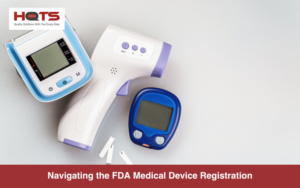When ordering a quality inspection, many buyers quickly come to terms with the fact that inspecting every unit of a production batch (as is the case with a Piece-By-Piece inspection) may ensure quality. But is, unfortunately, generally not financially feasible.
Instead, it’s often more practical to inspect a sample of the production lot to evaluate its overall quality – and this is where the AQL inspections come into place. This article will give you the basics of how AQL sampling is used in quality inspection and how to read the AQL sampling table.
What Is the AQL Method?
AQL is an acronym for “Acceptable Quality Level.” It is the process of inspecting a production sample to evaluate its quality. The sampling method used in quality control has been developed by ISO and is called the ISO 2859-1 standard.
The ISO standard defines AQL as: “the quality level that is the worst tolerable percentage or ratio of defects that are still acceptable”. It represents the maximum number and type of defects accepted in an inspected example, beyond which the entire batch must be rejected.
AQLs can be set for a percentage or number of critical, major and minor defects. In practice, these three levels are most often used, especially for consumer products. They are defined as follows:
- Critical Defects – 0%
Not acceptable as a user could be harmed, the product is not compliant with regulations, or the defect results in product failure.
- Major Defects – 2.5%
This represents defects that result in the product being considered unacceptable by the end user.
- Minor Defects – 4.0%
Failure to meet specification in ways that most buyers would still accept.
How to Read the AQL Table
To determine the AQL sampling plan for a random product inspection, you’ll need to set the criteria for how many units you want the inspector to inspect. This can be done by using an AQL Table.
The American National Standards Institute (ANSI) and the American Society for Quality (ASQ) developed the most common AQL standard for the consumer goods industry. AQL table is a fundamental tool for preparing an AQL sampling plan for random product inspections.
Table 1 – Sample size code letters
Table 2 – Single sampling plans for normal inspection
Notes: “√” means acceptance “×” means rejection
“↑ “ :use first sampling plan above arrow. If sample size equals or exceeds lot or batch size, do 100% inspection.
“↓ “: use first sampling plan below arrow.
AQL Sampling Plan
If you have an order of 960 articles of clothing ready to ship and want to calculate the required AQL for inspection, then all you need to do is to:
- Check Table 1 for general inspection levels and select your lot size in the relevant range, which is 501-1200. If you run your inspection at the average inspection level II, your code would be the letter J.
- On Table 2 locate the code letter J and, and you can see your sample size is 80, which indicates the number of pieces required to be inspected.
How to Determine the Number of Defects Using the AQL Sampling Table
As per the sample size above, you must determine the maximum number of critical, major and minor defects that are allowable before the product passes inspection. AQL 0.0 is for critical defects, AQL 2.5 for major defects and AQL 4.0 for minor defects
To determine the number of allowable major and minor defects, follow table AQL sampling, in the J row to the 2.5% column, where the numbers 5 and 6 are recorded. The lower number, 5, is the maximum number of allowable defects that will result in acceptance. In the same way, you can find the number 7 as the maximum number of allowable defects for minor defects.
AQL Summary Table
| AQL Summary for 960 Articles | ||||
| Level | Sample | AQL Critical | AQL Major | AQL Minor |
| G-II | 80 | 0.0 | 2.5 | 4.0 |
| Max Allowed | 0 | 5 | 7 | |
Tips: Use HQTS AQL calculator to calculate the required sample size and defects.
General and Special Inspection Levels
AQL Special inspection levels (S-1, S-2, S-3, S-4) are typically used for certain types of on-site inspections or checks that are only necessary on a relatively small number of units in the lot. The results are not likely to differ significantly between units inspected (often <10 units), especially where an inspection requires destructive or time-consuming tests.
General inspection levels (G-I, G-II, G-III) are the most common inspection levels used for larger lots. These cover all the regular checks and tests that can be conducted relatively quickly with varying results across all items sampled. They are generally used in the following way:
- G-I
Products with less strict requirements
- G-II
The most common sampling plan for consumer products under normal conditions.
- G-III
Products with more strict requirements.
Conclusion: AQL Inspections: How To Read an AQL Sampling Table
An AQL inspection is used by many industries, including manufacturing textiles, machinery and equipment to check whether a sample of products are up to par to the agreed requirements and specifications. In these inspections, the inspector will be required to inspect a predetermined number of units based on the AQL sampling table.
HQTS uses the AQL sampling method in our quality inspections, including pre-shipment inspections. Contact us today if you want to learn more about the AQL sampling method process or want to book an inspection.





